A throwing knife is designed with a specific weight to allow you to throw it easily and effectively.
Versatility in applications and flexibility in designs have made them popular in many cultures around the world.
Just like each piece of equipment (household or others) has its specific requirements to deliver its utility, throwing knives also have theirs.
But how to hold a throwing knife like a PRO? That’s what we’re exploring today. Let’s jump right in!
How to Hold a Throwing Knife Properly
As mentioned earlier, one must be familiarized with the way a throwing knife should be held before putting it into action.
You may have thought the technique of holding the knife prior to throwing was done with mere intuition but it’s actually beyond that. Continue reading to know more.
1. Perfect Your Stance at First
This first step is ultimately in connection with the selected type of throwing knife that the user wants to handle.
There are different structured throwing knives with different techniques, of course. Consequently, every throwing knife may require different or similar stances when holding.
Now based on the target in a scenario, you will need the proper stance to favor your throw power.
The fundamental thing to do here is to focus on your footing and body posture.

- Having a relaxed body is a critical aspect of your stance. If the body is tense then you will compromise the right way to hold and throw the knife efficiently.
- An upright posture is also important and you stand up straight for better performance.
- For right-handed throws, put your right foot forward and place the left one slightly at its back (vice-versa for the opposite)
2. Identify the Stronger Hand
When practicing how to hold throwing knives, you should consider which of your hands can suitably fit the handle. Ignoring this factor may significantly cause a terrible throw.
Which of your hands do you naturally feel can hold the handle of the throwing knife firmly?
If you are one of the ambidextrous people then you should consider which of your hands will favor the odds of you hitting your target.
3. Then, Think About Gripping
There are quite a number of gripping styles for throwing knives. The common ones have been enumerated below for you to enhance the apt ways to hold a knife.
Remember that the various grip techniques are to be applied to the throwing knives that fall suit.
Apply them to other knives may not produce the same results, and might be fatal in some instances. So study carefully before anything else.
Hammer Grip
Just as the name connotes, you apply this style similar to how you casually hold a hammer.
Do this by placing the throwing knife’s handle across your palm and towards your knuckles.
Firmly wrap your four fingers underneath and about its handle with the thumb just positioned over the top. When done, it should look like you are holding a hammer.
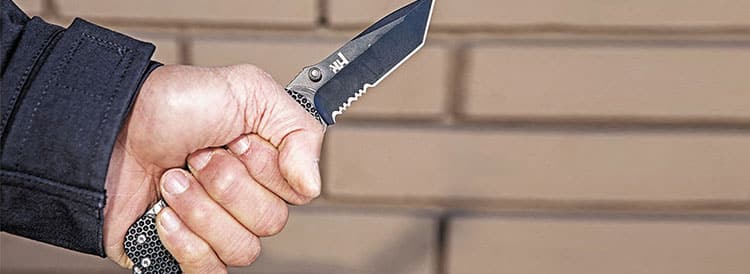
Mcevoy Grip
This particular grip got its designation from Harry McEvoy, a skilled man known for contemporary knife throwing.
He designed many knives to favor this kind of grip, but it was realized his grip can be used with many other knives.
To achieve this grip, you wrap the handle of the knife with your four fingers, making sure the thumb is placed on the spine of the knife before you throw.
If you get a perfect shot, you have successfully mastered this.
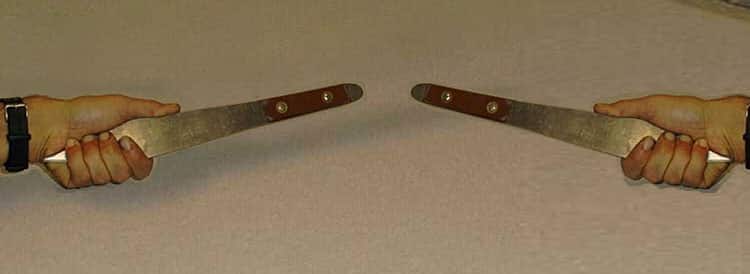
Pinch Grip
The pinch grip is normally classified as a single-edged blade or a double-edged blade.
Basically, this style is done by pinching the tip of the knife that is between your thumb and the second knuckle of your index finger then you wrap the rest of your hand around the handle like a fist-like grip.
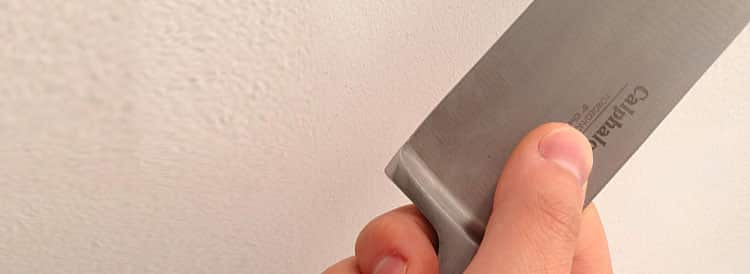
For a Knife with a Single Edge
For such knives, what you want to do is, put out your palm before you and move the thumb in order to provide a crease between the fleshy surface of the thumb and the rest of the palm.
Now, place the dull edge of the blade into the crease (the knife’s handle points away from you) wherein the tip aligns with the bottom of the thumb’s crease.
Place the thumb across a side of the blade and the rest fingers except the pinkie finger at the other side, thus allowing you to pinch the blade without pressing against the sharp edge of the knife’s blade.
For a Knife with Double Edges
For these knives, just as described above, initially grasp the tip of the knife and place the thumb across a side of the blade as the rest fingers except the pinkie finger are kept on the other side.
This allows you to pinch the blade without pressing against the sharp edge of the knife’s blade as well.
If it seems complicated, read it again, we are sure you will get it.
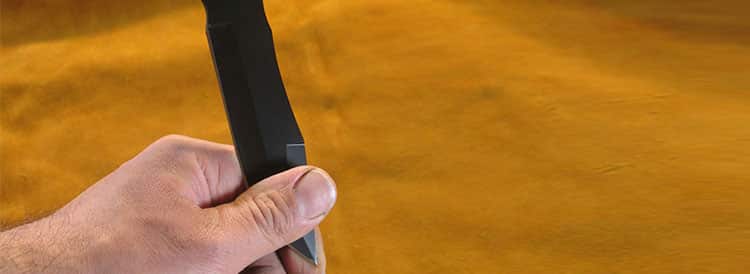
4. Consider Angling the Knife as Part of Holding It
This is an integral factor that is developed for the distance and target you aim at when holding the throwing knife.
It will affect the manner in which the knife flips through the air, chiefly depending on the distance between you and your target.
Conventionally, a knife held by its handle should turn at least once (360 degrees) in the air to land point-first while a knife held by its sharp end should turn more than once.
Let us take a look at how holding the knife at an angle will perform effectively at specified distances.
A Little Distance
Take your wrist behind your back towards your forearm to initiate the throw. Doing this enables the knife to spin faster which is appropriate for the close distance.
Mid-Range Target
Take your wrist a little bit behind your back towards your forearm to initiate the throw.
The knife will turn and hit the target at a quick pace which is suit since there isn’t much gap between you and your target.
Fairly-Distant Target
Keep your wrist and forearm slightly straight in the air to initiate a straight throw.
This naturally makes the knife not spin too much in the air which is ideal since there is quite a lengthy distance between you and your target.
Cautions to Keep in Mind
- Do not stay too close to your target so that the knife does not ricochet toward you.
- Try to do your knife-holding and throwing practices outdoors in discreet areas if necessary.
- Do not use knives with broken handles or dilapidated blades to learn. It may turn dangerous quickly.
- Throwing knives are completely liable to the user as circumstances will be fully addressed and accountable to the individual involved.
Okay, so you’re probably thinking about the throwing knives you want to experiment with or how you are going to expand your versatility by holding other throwing knives. Ride on!
As long as you get the right holding method and relative criteria explained above, you might be astonished at how well your throwing skill will improve.
Don’t forget to keep your knives super sharp all year round to gain your desired results.

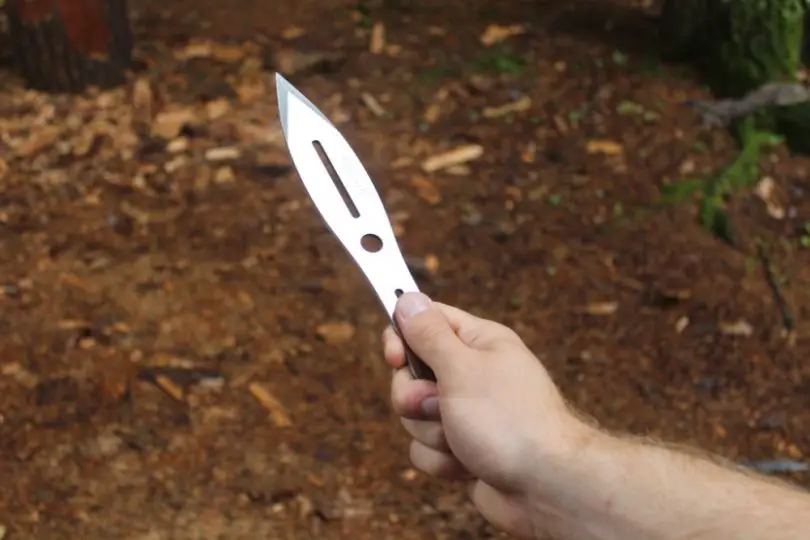







Leave a Comment